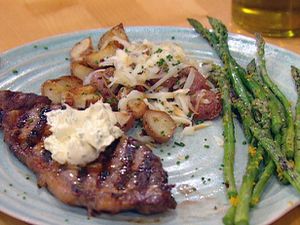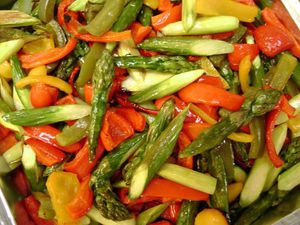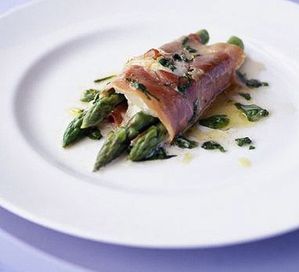Exotic Food - Aparagus
Asparagus is a spring vegetable native to Europe, Northern Africa and West Asia. Asparagus is high in folic acid, Vitamins A,B6 &c, Calcim, Iron, Thiamin, Potassium, Fiber and anitoxidants. It has been used from early times as a vegetable and medicine owing to it sdelicate flavour and diuretic properties. Only the young tender shoots are eaten. However since this is a seasonal vegetable, its also known to be pickled and stored for several months

The earliest use of Asparagus dates back o 3000 BC and reciepies dates back to the 3rd Century AD. Green asparagus is eaten worldwide, though the availability of imports throughout the year has made it less of a delicacy than it once was. However, in the UK, due to the short growing season and demand for local produce, asparagus commands a premium and the asparagus season is a highlight of the foodie calendar. In continental northern Europe, there is also a strong seasonal following for local white asparagus, nicknamed "white gold"

Traditionally Asparagus is green, however Spargel (german for Asparagus) is white and tender as they are covered with soil to prevent photosynthesis and hence does not get the green color. Spargelfest (Asparagus Festival) is held every year in Schwetzingen (some 100kms southwest of Frankfurt, Germany). Purple asparagus differs from its green and white counterparts, having high sugar and low fibre levels. Purple asparagus was originally developed in Italy and commercialised

Traditionally Spargel is eaten in germany, roasted or grilled with roast potatoes and Hollandaise Sauce and in other parts of the world can be served boiled along with steak


Asparagus can be used with spaghetti or noodles, thai curries, Pasta, in salad (goes well wth roast peppers) and stir friend in Cantonese and East Asian food

Asparagus can also be roasted on a pan and added to Indian Curry dishes just before serving and has a unique flavour and taste that will leave you wanting for more

Now that you have read about the nutritional and culinary values of Asparagus, I would like to turn your attention to something unique to post-asparagus consumption. It will not be good to continue here, but having hinted about it, I cannot stop writing about what is called 'Asparagus Urine' .
When the sulphoros components in Asparagus is broken down by the digestive system , you might notice any wee that you can take normally in around 30 minutes time, has a pungent smell. This smell is however not pungent or detectable to all of us. So stop whiffing when you use the toilets after eating asparagus.
